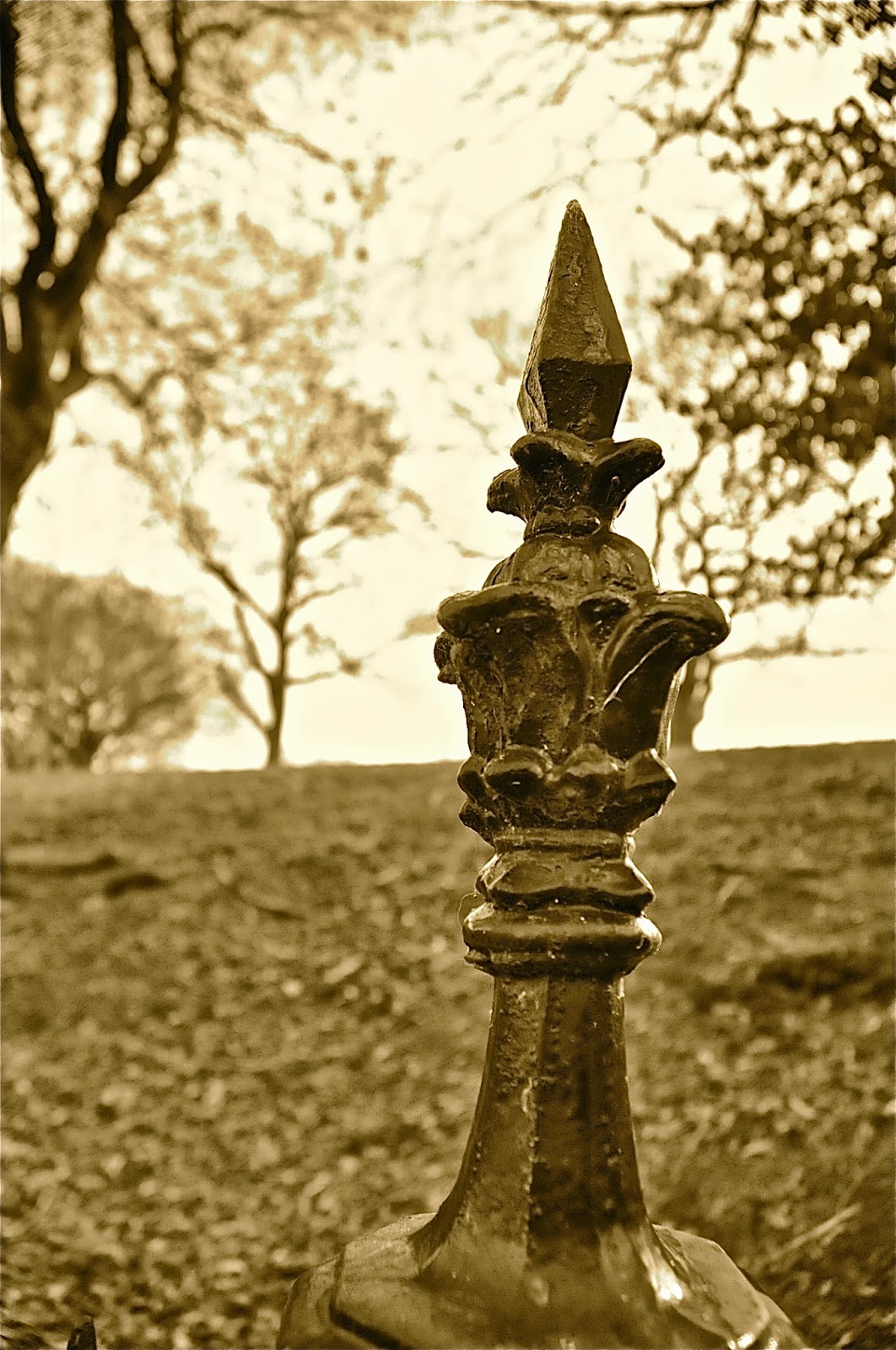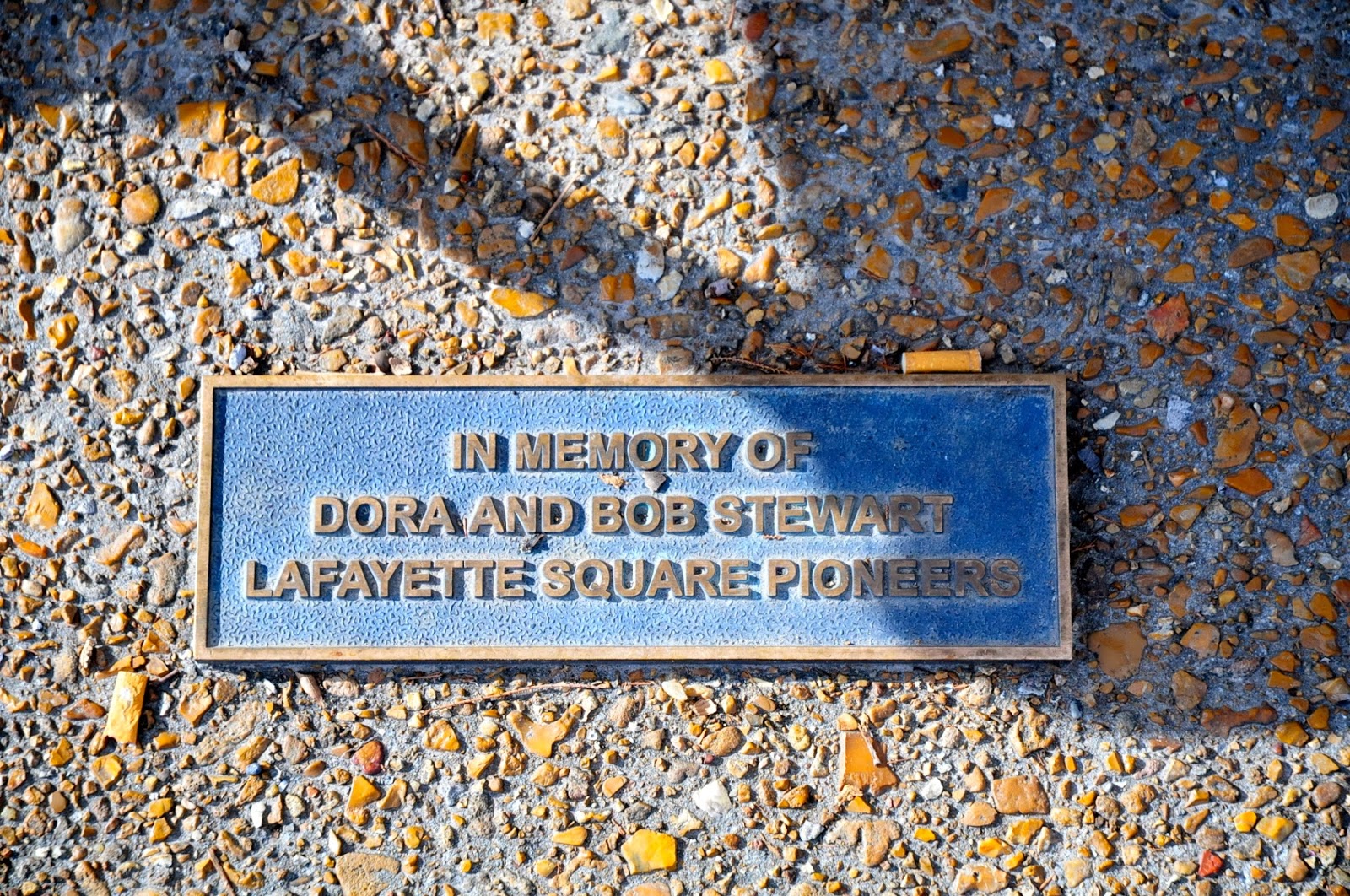From the city website:
Presented to the City in August, 1842 by William C. Carr, with the stipulation that it was "to be forever used as a square" It was later enclosed with a high iron fence at the request of the citizens of the neighborhood.I couldn't find any information on who Loretta Hall is, or her story. Please contact me if you know. So, instead I'll share some info on William C. Carr.
Here's a brief timeline of Carr's life from the Missouri History Museum:
The son of Walter Carr, William Chiles Carr was born April 17, 1783, in Albemarle County, Virginia. He arrived in St. Louis in 1804 at the age of 21 and entered into the practice of law. He remained in St. Louis only briefly before moving to Ste. Genevieve, where he lived a year before returning to St. Louis, which then became his permanent home. In 1826, William C. Carr was appointed judge of the circuit court, the jurisdiction of which included several counties besides St. Louis, extending west to the Osage River and south and southwest almost to Arkansas. He resigned his judgeship in 1834, and retired to the private practice of law until his death on March 31, 1851.Per this source, Judge William C. Carr, in 1813 built the first brick dwelling in St Louis.
Many refer to St. Louis as "the Red Brick Mama", does this mean William C. Carr is "the Red Brick Papa"?
One last thing about Mr. Carr, before I get back to the park. Carr School, named for Mr. Carr, one of the first St. Louisans to push for high quality public education in the city is crumbling just north of Loretta Hall Park.
This is Paul McKee's building now and it looks worse than ever. I've been photographing this place for nearly 10 years and it has declined so greatly under McKee's ownership, you wouldn't believe it. If you want to explore this building, it easier more now than ever as the upkeep has gone to zero and there are wide open entry ways in a couple different areas. It is no longer boarded up and secured. If one desired, you could walk right in and take a look for yourself.
a map of McEagle Properties, circled is the area around Loretta Hall Park
I went to a recent talk McKee gave at Vashon and Carr School was one of the key properties in his NorthSide plan; he and his wife Midge said it will be the "job center" of their NorthSide project. The St. Louis American reported this as well back in June, 2013:
McKee said he also plans to mentor and grow minority- and women-owned businesses to meet the project’s 25/5 percent goals on minority- and women-owned business participation specified in the Mayor’s Executive Order. He said his team is currently working on transforming Carr School, at 1421 Carr St., into an incubator for start-up businesses. (source)I don't want to be overly critical of this suburban developer, because he is trying hard and I don't believe he is just an evil capitalist/opportunist. This and the Walnut Park areas of St. Louis are the most challenging from all angles. I want to believe everything this guy McKee says, but I'm highly suspicious of his methods. His track record as a property owner is deplorable. He has let this building degrade to near collapse by doing NOTHING to the windows, doors, walls and most importantly, the roof. This lack of action doesn't back up his talk, and that, I think is why many who live here and love St. Louis are skeptical of his actions. The city meanwhile follows his suit and does nothing in return. They are just happy to deflect blame to somebody else.
As it stands today, McKee's two middle fingers are held high in the air to the people of St. Louis and the legacy of William Carr and William B. Ittner, the architect that designed this beautiful work of art that was in use from 1908 -1983.
Here's a couple photos from Built St. Louis in 2001 and 2007 that will help illustrate the lack of upkeep and care over the years:
2001, entry ways secured
2007, the path to failure and neglect in full view...
And here's some from February, 2014:
board haven't been replaced since the early 2000's
Come on in, McEagle Properties welcomes you
there's still some metal for scrap boys, come on in and get you some
Mr. McKee this is why the people who live in St. Louis (I know you choose not to) are suspicious of your actions to date. I remain optimistic of your plans and the sweet talk, but if high winds take this down, you will have failed the people of St. Louis who love this place and our history. Why not do SOMETHING to secure your most significant properties?
Geez, our history is left in the hands of suburban developers who don't seem to give one care for the legacy of our forefathers. And, the city sits there with eyes turned with no fines or penalties while honest home owners get cited for peeling paint in our good neighborhoods. This is why the city government does not get taken seriously. They are soft and weak.
Back to Loretta Hall park, or is it Coretta Hall park?
You'll find softball fields, a basketball court in excellent condition and a playground.
It was nice to see some new amenities like recently planted trees and benches.
Upon my visit there was a ministry group handing out free food. The homeless were the target audience, but no one was denied a free meal. Young, able bodied men were driving up, getting out of the car, getting a plate of food and hopping back in the car and taking off.
I've seen church groups feeding the homeless all over downtown's parks. I make it a point to talk to them and ask if they have permits and until today, they say have said no. I ask them where they are from, they've always been from the burbs, until today.
The group today was from St. Louis and said they have a permit to do food service in the park. I will not mention the name of the ministry in case they don't. Their hearts are in the right place, but it just doesn't seem like a church should be feeding people in a public park on city property. Why not do this on church property? This seems like a good case study for the separation of church and state...a key principle of our democratic American society. I shook the man's hand who was in charge of the food line, and thanked him for caring. I don't have the answers for what can be done to de-concentrate the large number of homeless shuffled toward downtown's neighborhoods from the ENTIRE region, including the burbs. It worries me and saddens me that the city chooses to concentrate the homeless in and near downtown...and, this group feels the same yet is actual doing something even if it isn't the right thing to do for the long term.
I truly hope McKee has success in tackling these insanely complex social ills and legacy of neglect that exist in this part of St. Louis...from his seat in O'Fallon, Missouri.






























































































